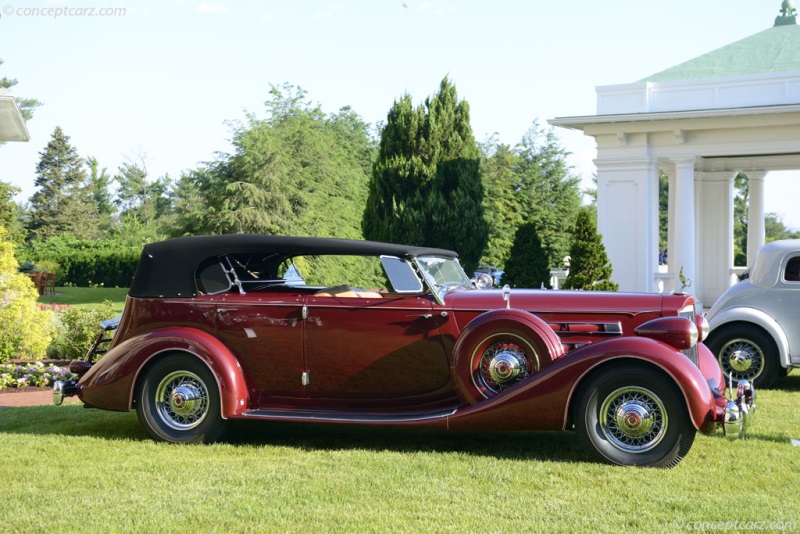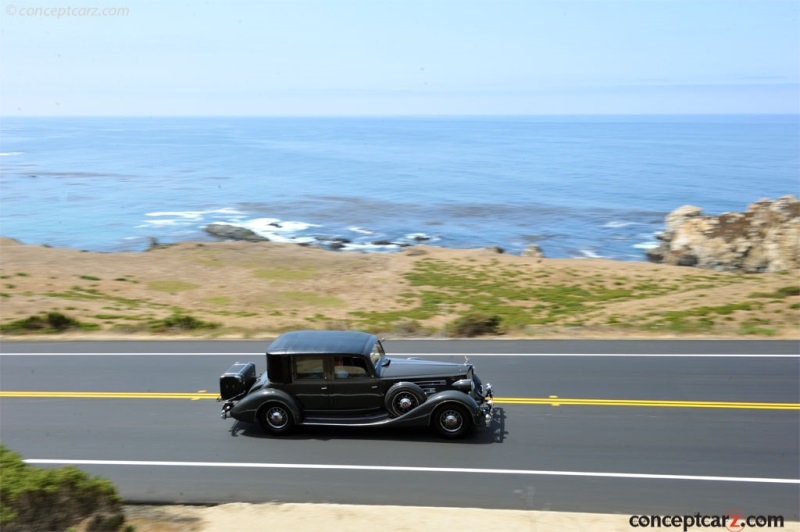Production of Packard's first V-12, the Twin Six, ended after 1923, replaced by a smaller Single Eight, which outperformed it. During the late 1920s and early 1930s, the cylinder wars continued to escalate. Cadillac introduced a V-16 in 1930, followed shortly by Marmon, and despite the Great Depression ravaging luxury car sales, Packard responded with another V-12. The new engine had no resemblance to the old, and with a 445.5 cubic-inch displacement, it was larger than its predecessor, and with a 67-degree vee, it was wider. The old engine offered 90 horsepower while the new was rated at 160 bhp. The all-new Packard Twin Six was introduced in 1932, later renamed 'Packard Twelve.' Although it was never a high-volume production, the Twelve sold well despite the Great Depression. 
Coupe Roadster
View info and historyThe Packard Twin Six was introduced in January of 1932, with 22 body styles offered and prices ranging from $3,745 to $7,950. Fewer than 550 V-12 cars were sold during the model year, and nearly the same was sold the following year, with 540 cars built. The market improved in 1934, and sales nearly doubled. All Packards received new, more streamlined bodies in 1935, and the Twelve received aluminum heads and a quarter-inch of stroke. Along with an improving economy, Packard had - for the first time in their history - issued a bulletin to dealers, along with press releases to the media, that its Twelfth Series, introduced on August 30, 1934, would also be known as 1935 models. Prior to this, Packards models were introduced at various times throughout the calendar year. This means that only Packards manufactured after August of 1934 are referred to by their designated model year. Packard had switched to this labeling method to comply with President Roosevelt's request that automobile announcements be as early in the fall as possible to help stabilize and reduce unemployment during the winter months. Another reason was that Packard was a member of the Automobile Manufacturers Association and favored holding the new auto show in November rather than in January.Along with new streamlined bodies introduced for 1935, Packard began offering a new low-priced One Twenty model, a first for the marque. Nevertheless, Packard remained the leader in luxury automobiles with the Twelve being the highest form of luxury in the Packard model hierarchy. Each completed example was quality checked by the factory and then given a 250-mile run on the Packard test track in Utica, driven by Col. Jesse Vincent's brother Charles before delivery.
Coupe Roadster
View info and historyThe Twelfth Series, Packard Twelve consisted of the 1206, 1207, and 1208. The Model 1206 was a short-wheelbase sedan with a wheelbase measuring 132.5 inches. The 1207 rested on a 139.25-inch platform and was offered in ten body styles, with the All-Weather Cabriolet by LeBaron being the only custom design. The Model 1208 had the longest wheelbase, measuring 144.25 inches, and offered in five body styles, including the All-Weather Town Car being built by LeBaron. Prices ranged from the high $3,000 to over $6,400. The 473.3 cubic-inch V-12 engine offered 175 horsepower and was backed by a three-speed selective transmission. Braking was employed by mechanical vacuum-assisted brakes on all four wheels. Total 1935 for the V-12 Packard reached 788 examples. Packard Twin Six
The Packard Twin Six was built in 1932, and the following year it became the Packard Twelve and would remain in production through 1939. When introduced in 1932, the Ninth Series Twin Six was offered with either a 142.5-inch platform in the Series 905 and a 147.5-inch platform in the Series 906. The 67-degree L-head Twelve-cylinder engine had a cast-iron monobloc, four main bearings, a Stromberg/Duplex carburetor, aluminum alloy pistons, and a 445.5 cubic-inch displacement. It was backed by a three-speed selective synchromesh transmission with a double plate clutch and outer floor-cane controls. Mechanical brakes at all four corners provided the stopping power. Freewheeling controls were on the steering column. Three hundred eleven examples of the Series 905 and 238 of the 906 were built that year. Packard Twelve (1933 - 1939)
Packard's twelve-cylinder production was exclusive and was essentially a means of remaining relevant in the ultra-luxury segment. While Packard explored its ability to compete at the highest levels of the automotive market, it simultaneously tested the lower and perhaps more lucrative mid-market segment with the Light Eight. Retaining the prestige and build quality of the 'senior' Packard line, the Light Eight was priced slightly lower than its siblings, which proved to be its Achilles Heel. Had it been priced much lower, it may have remained in production longer. Instead, it was built for less than a year. Packard would explore the lower-priced market segment again in 1935, and this time they would succeed. Their 'low' priced Packard One Twenty became so successful, that it eventually prompted the company to move even further downmarket with the introduction of a six-cylinder model.
Coupe
Chassis #: 838223
View info and history
Auction entries : 1By the close of the 1930s, Packard had found success with its lower-priced models, the market had changed significantly, and Packard's twelve-cylinder was nearing the end of its lifespan. The company had proven capable of competing in the multi-cylinder arena, with vehicles endowed with imposing scale and grand proportions. Packard twelve-cylinder production
1932 Packard Twin Six: 549 (introduced January 1932)
1933 Packard Twelve: 520 (introduced January 1933)
1934 Packard Twelve: 960 (introduced August 1933)
1935 Packard Twelve: 788 (introduced August 1934)
1936 Packard Twelve: 682 (introduced August 1935)
1937 Packard Twelve: 1,300 (introduced September 1936)
1938 Packard Twelve: 566 (introduced September 1937)
1939 Packard Twelve: 446 (introduced September 1938)Total: 5,811
Coupe Roadster
View info and historyIn comparison, Duesenberg produced 445 examples of its Model J and 36 Model SJ (481 total) between 1928 and 1937. 4,076 examples of the Cadillac's V-16 model were built from 1930 through 1940. Approximately 390 examples of the Marmon Sixteen were built from 1931 through 1933.
by Daniel Vaughan | Feb 2020
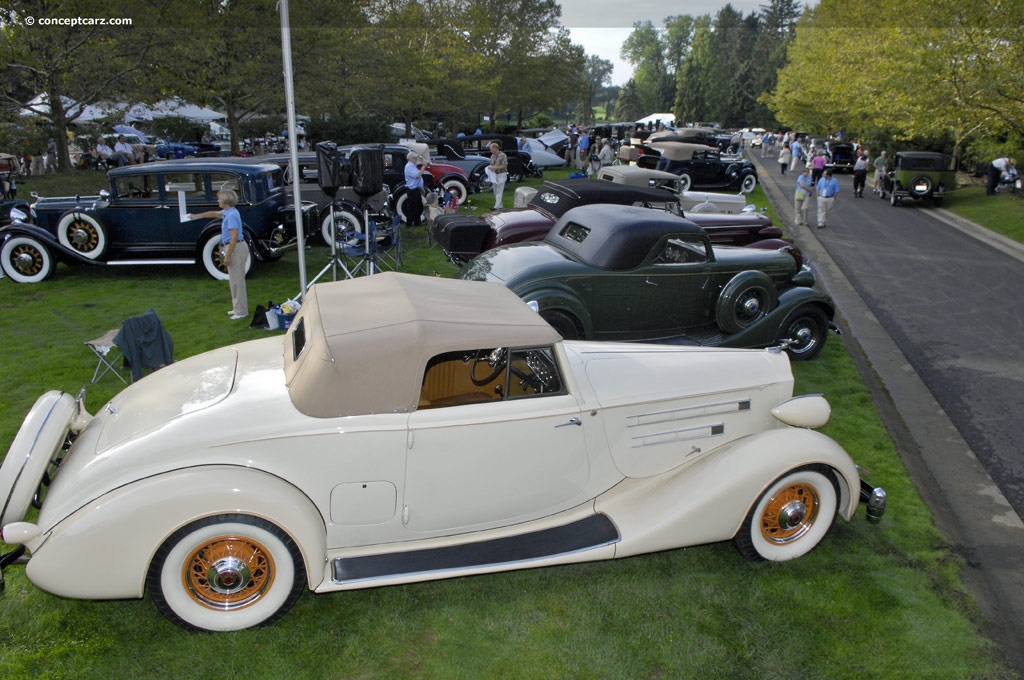
Coupe Roadster
View info and history
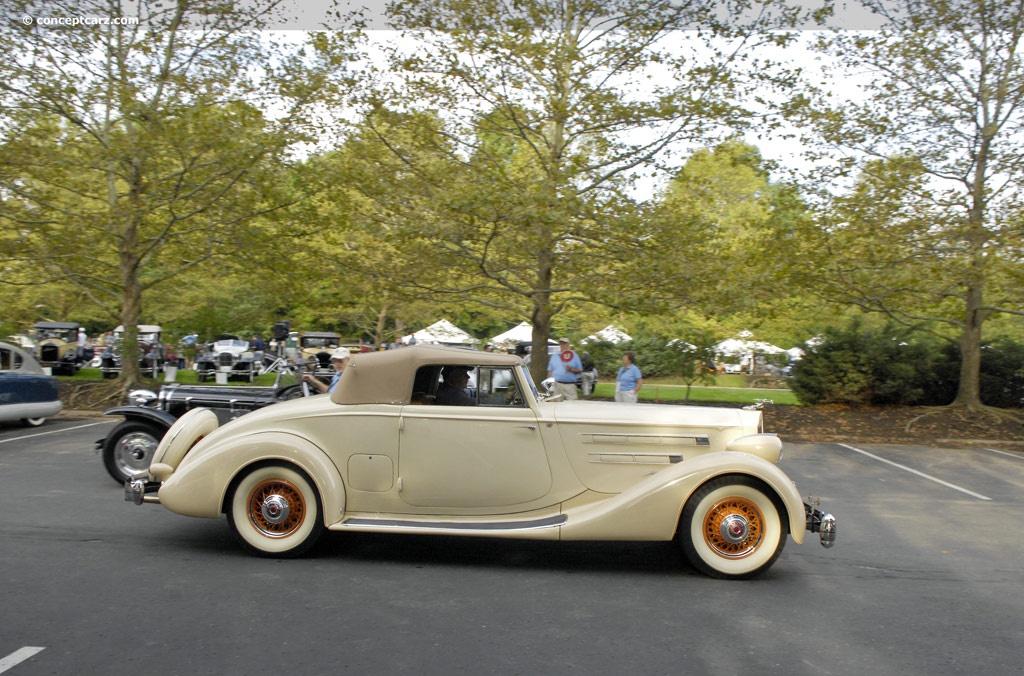
Coupe Roadster
View info and history
The Packard Twin Six was built in 1932, and the following year it became the Packard Twelve and would remain in production through 1939. When introduced in 1932, the Ninth Series Twin Six was offered with either a 142.5-inch platform in the Series 905 and a 147.5-inch platform in the Series 906. The 67-degree L-head Twelve-cylinder engine had a cast-iron monobloc, four main bearings, a Stromberg/Duplex carburetor, aluminum alloy pistons, and a 445.5 cubic-inch displacement. It was backed by a three-speed selective synchromesh transmission with a double plate clutch and outer floor-cane controls. Mechanical brakes at all four corners provided the stopping power. Freewheeling controls were on the steering column. Three hundred eleven examples of the Series 905 and 238 of the 906 were built that year. Packard Twelve (1933 - 1939)
Packard's twelve-cylinder production was exclusive and was essentially a means of remaining relevant in the ultra-luxury segment. While Packard explored its ability to compete at the highest levels of the automotive market, it simultaneously tested the lower and perhaps more lucrative mid-market segment with the Light Eight. Retaining the prestige and build quality of the 'senior' Packard line, the Light Eight was priced slightly lower than its siblings, which proved to be its Achilles Heel. Had it been priced much lower, it may have remained in production longer. Instead, it was built for less than a year. Packard would explore the lower-priced market segment again in 1935, and this time they would succeed. Their 'low' priced Packard One Twenty became so successful, that it eventually prompted the company to move even further downmarket with the introduction of a six-cylinder model.
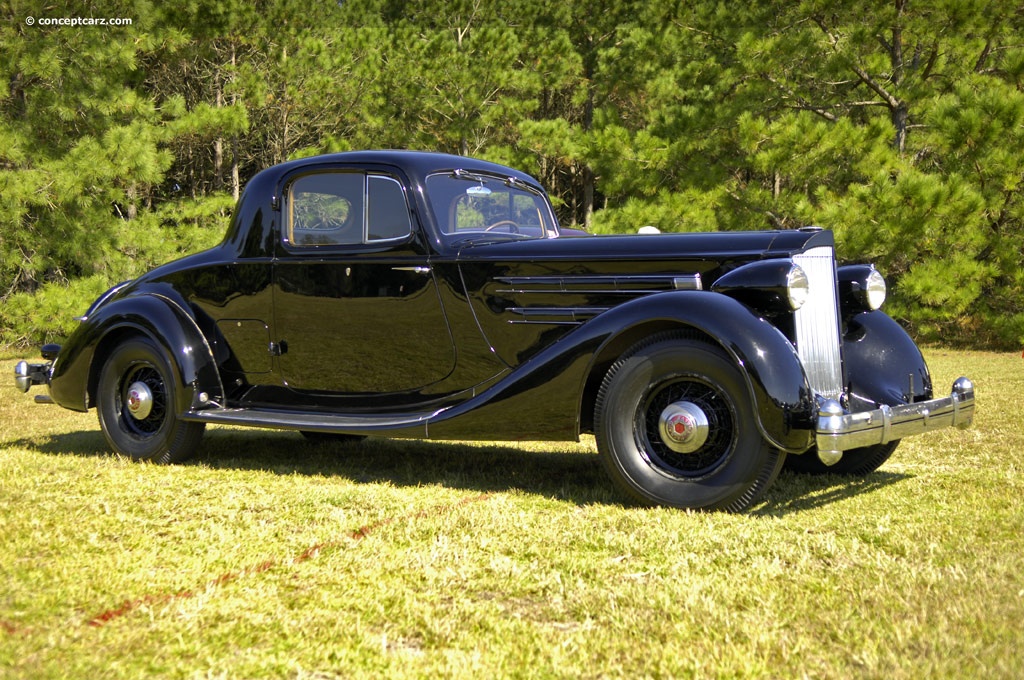
Coupe
Chassis #: 838223
View info and history
Auction entries : 1
1932 Packard Twin Six: 549 (introduced January 1932)
1933 Packard Twelve: 520 (introduced January 1933)
1934 Packard Twelve: 960 (introduced August 1933)
1935 Packard Twelve: 788 (introduced August 1934)
1936 Packard Twelve: 682 (introduced August 1935)
1937 Packard Twelve: 1,300 (introduced September 1936)
1938 Packard Twelve: 566 (introduced September 1937)
1939 Packard Twelve: 446 (introduced September 1938)Total: 5,811
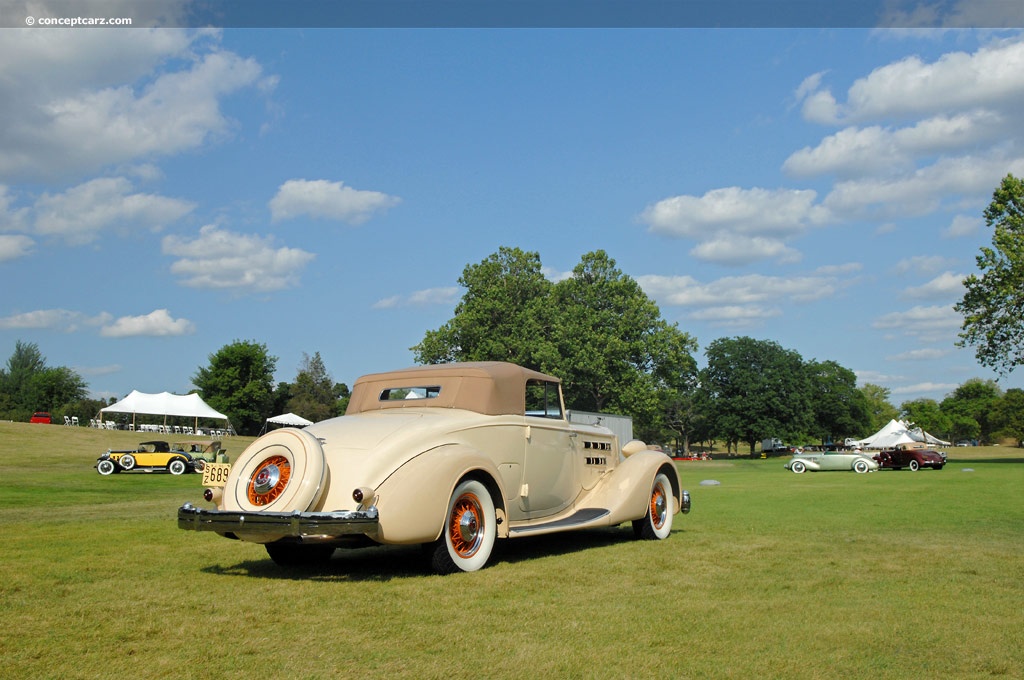
Coupe Roadster
View info and history
by Daniel Vaughan | Feb 2020
Related Reading : Packard Twelve History
The Packard Twelve was produced from 1933 to 1939 with over 35,000 examples produced. It is considered by many to be one of the finest automobiles produced by Packard and one of the most significant creations of the classic car era. The long and flowing front hood hid a 445 cubic-inch side-valve twelve-cylinder engine that was refined, powerful, smooth, and quiet. The engine was originally destined....
Continue Reading >>
Continue Reading >>
Similar Automakers
Similarly Priced Vehicles
Autocar UD Tanker ($4,200-$4,200)
Cadillac Model 370-D Series 40 ($3,995-$6,295)
Average Auction Sale: $198,563
Cadillac Model 370-D Series 40 ($3,995-$6,295)
Average Auction Sale: $198,563
1935 Packard Twelve Vehicle Profiles
Recent Vehicle Additions
Performance and Specification Comparison
Price Comparison
$2,400 - $5,500
$3,000 - $5,700
Twelve Twelfth Series Specification Comparison by Year
Year
Production
Wheelbase
Engine
Prices
Related Automotive News

Greenwich Concours : Best of Show American
Day 1 of the Greenwich Concours crowned a 1935 Pacakrd Twelve Dual Cowl Phaeton owned by Al and Sandra San Clemente as their Best in Show.
Day 2 of the Greenwich Concours is reserved for European cars.
For 1935 Packard refined its flagship Twelve...

The Don Williams Collection of Stunning Pre-War Classics, Including 1937 Mercedes-Benz 540K, Will be Offered with No Reserve During Barrett-Jackson's 2024 Scottsdale Auction
Barrett-Jackson, The Worlds Greatest Collector Car Auctions, will offer seven stunning classic vehicles from the Don Williams Collection during the 2024 Scottsdale Auction held January 20-28 at WestWorld of Scottsdale. Each premium vehicle...

Gooding & Company Presents the Estate of Mark Smith Auction, Entirely Offered Without Reserve, this April
The Estate of Mark Smith Auction will feature offerings, all without reserve, from the personal collection of the late Mark J. Smith, including largely original and unrestored Classic Era automobiles from Mercedes-Benz, Chrysler, Bentley, White, and...

Past Best of Show Winners at The Pebble Beach Concours d'Elegance
overview1
The 70th anniversary of the Pebble Beach Concours dElegance was celebrated with a spectacular display of previous Best of Show winners. Thirty-seven examples graced the showfield and many were still with the same owners who raised the trophy...

63rd Pebble Beach Concours d'Elegance Names 1934 Packard 'Best of Show'
The competition showcased 248 cars, including 48 from abroad
PEBBLE BEACH, Calif. (August 18, 2013) -- A 1934 Packard 1108 Twelve Dietrich Convertible Victoria owned by Joseph and Margie Cassini III of West Orange, New Jersey, was named Best...

Magnificent Series of Coachbuilt Classics To Grace RM's Amelia Island Concours D'Elegance Sale
RM Auctions returns as the official auction house of the Amelia Island Concours dElegance, March 9, 2013
Single-day sale features breathtaking roster of more than 80 investment-quality collector cars
Notable highlights include an outstanding s...





























